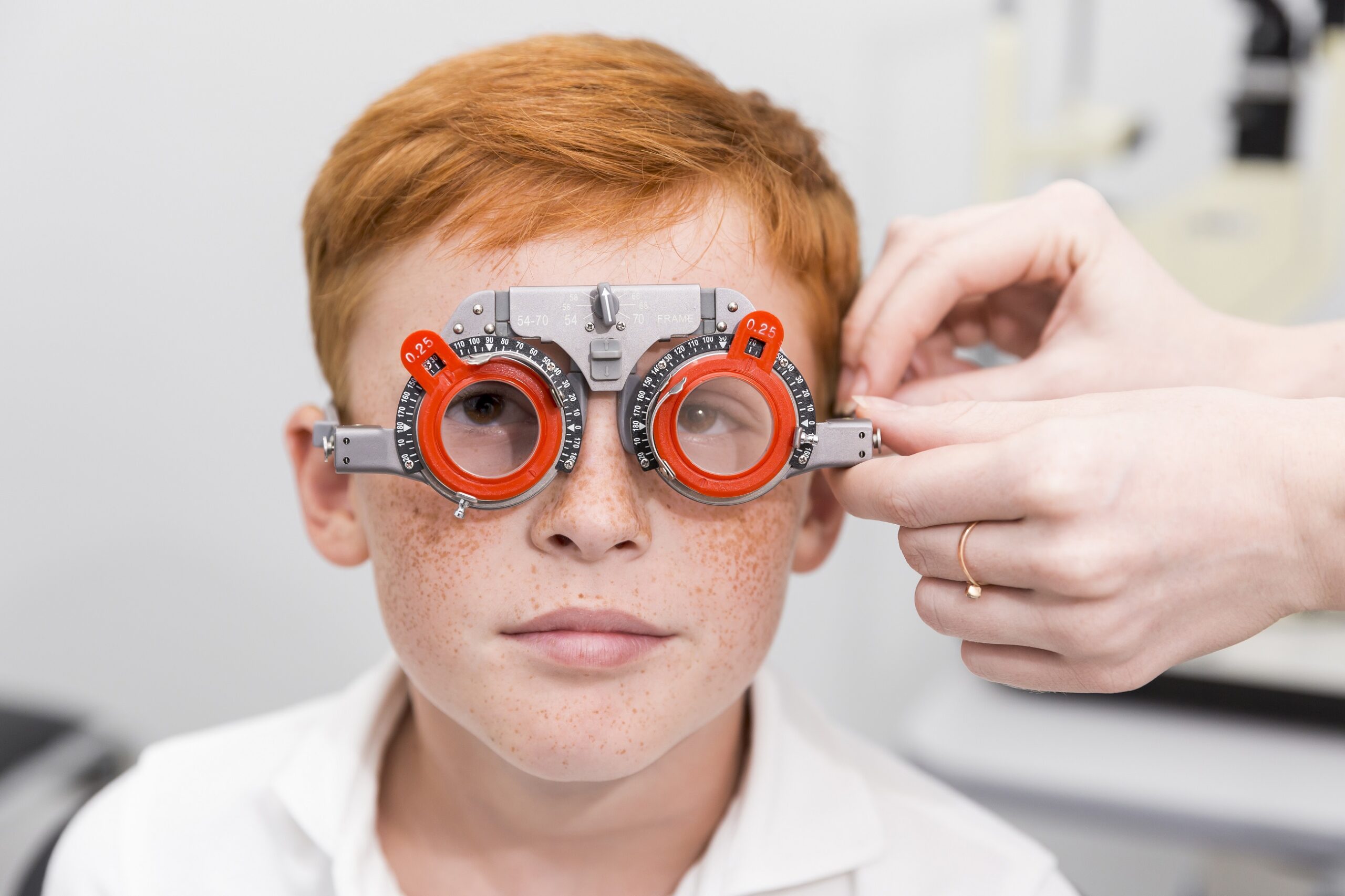
Infants
Infants are recommended to have their first exam between 6-9 months. They will check to ensure:
During the first 4 months, their visual distance will expand from a few centimetres to many metres. Their vision will become clearer and colour vision will begin to develop. By 4 months of age, an infant’s colour vision is similar to an adult, and by the 6th month, your baby will acquire eye movement control and develop eye-hand coordination skills. For the first 6 months, an infant’s eyes can appear slightly crossed or out of alignment, but this is normal. However, if your infant’s eyes appear significantly crossed or remain misaligned, contact your doctor of optometry.
Toddlers & Preschoolers
Children ages 2-5 are recommended to have at least one eye exam. They will check to ensure:
Children at age 2 enjoy listening to and looking at storybooks. It helps them develop visualization skills and prepares them for learning to read. Preschooler’s eyes are not ready for prolonged or intense concentration at short distances. When watching television, they should sit further away than five times the screen’s width and take periodic breaks from staring at the screen.
Kindergarten
Once your child reaches kindergarten, they should have an annual eye exam. If it is determined that they require eye glasses, the Alberta Association of Optometrists’ Eye See . . . Eye Learn™ program will provide a pair of glasses free of charge.
School Years
Once in school, it is recommended your child have an annual eye exam as vision can change quickly.
A school-age child’s eyes are constantly in use in the classroom and at play. For school-aged children, several different visual skills must work together so they can see and understand clearly.

Undetected and untreated vision problems can elicit some of the same signs and symptoms that are commonly attributed to other development issues, such as ADHD, dyslexia and speech problems.
Signs and Symptoms Your Child May Have a Visual Problem:
Vision Success at School
Your child may not realize they have a vision problem as they may simply assume everyone sees the way they do. A vision-related problem may cause any of the signs and symptoms described below:
Digital Eye Strain
Digital eye strain is often caused by staring at close-up objects for extended periods of time and exposure to blue light that is emitted by digital devices. Another cause is insufficient blinking. People typically blink 12 times a minute, but when they stare at a screen, they tend to blink only 5 times a minute, which means their eyes are not being lubricated properly.
Symptoms of digital eye strain in children may include:
A doctor of optometry can recommend a customized solution, based on your child’s digital habits, to help prevent the adverse effects of digital eye strain. They may recommend computer glasses, which can help reduce eye fatigue. A blue-light filter can also be applied to prescription or non-prescription lenses to minimize the amount of blue light that reaches the eye.
SOURCE: https://www.optometrists.ab.ca/

